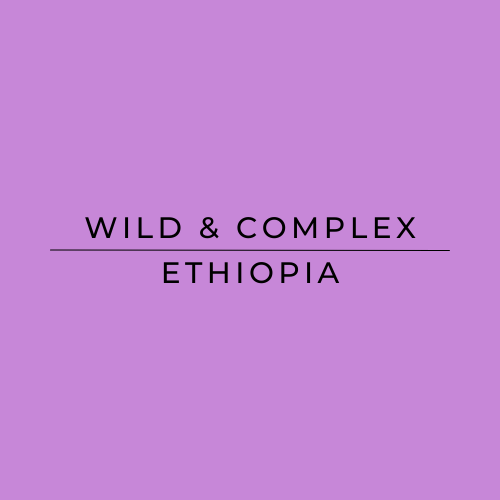How Long Should I Rest My Coffee?
One of the most frequently asked questions that we are asked is: How long should I rest my coffee for?
Looking at many of the other blog posts on the internet that touch on this subject, there's really quite a lot of outdated information flying around. For the last decade or so, the industry standard recommendation has been 5–14 days, with most places suggesting resting your coffee until day 10. This is actually a pretty good guide if the coffee roaster that you are buying from roasts their coffee dark–medium, but following this blanket rule will mean that we miss out on many of the really high-quality flavours and nuances that lighter roasted coffees have to offer.
Why Do We Rest Coffee?
The premise of resting coffee is very simple, and most have managed to get their head around the process. But just in case you haven't, here's a brief explanation.
CO2 and the Roasting Process
Ultimately, CO2 is a byproduct of the coffee roasting process. When coffee is roasted, CO2 pressure gradually builds up inside the coffee bean, making the bean swell in size. The roasting process shatters the cellular structure of the coffee, decreases the density of the bean, and this process makes it more soluble in water. As you roast darker, the amount of cellular shattering increases and further decreases the density of the coffee bean.
Outgassing / Degassing
Once roasted, CO2 gradually leaves the coffee bean over time via a process called outgassing (or degassing). The rate at which this process happens increases when the coffees are less dense.
A decrease in density allows the outgassing process to happen with less resistance, thus many of the gases are expelled from the coffee bean quite quickly, meaning that darker roasted coffees are suitable for brewing quite soon after roasting.
Lighter Roasts Need Longer
This isn't the case for lighter roasted coffee. Roasting coffees lighter results in a lesser amount of cellular breakdown. The absence of CO2 pressure and a higher-density bean means that CO2 escapes from the coffee very slowly.
Why Fresh Coffee Can Taste Harsh
Brewing coffees while they are super fresh can result in harsh astringency and harsh acidity from carbonic acid. Carbonic acid is actually created during the brewing process, not the roasting process. If there is a high amount of CO2 trapped in the coffee, the excessive CO2 will bind to the water when brewed to create H2CO3.
Do Roasters and Machines Affect Resting Time?
There are other factors as well which can affect the outgassing process, even coming down to the roasting machine that the company you buy from uses.
Convection Roasting
I have always been a fan of the high flavour clarity produced by Loring and other convection-style roasting machines like Typhoon. Convection heat application is the process of passing superheated air through a bed of coffee. I have found personally that this style greatly reduces the amount of roast-related defects, like tipping and scorching, when compared with other roasting methods.
Because of a lack of radiant heat, convection roasting reduces the amount of additional swelling that the coffee beans experience, reducing the amount of cellular breakdown and allowing them to preserve a little more density than other roast methods, meaning that coffees roasted in a Loring or other roasting machine take longer to outgas than other heat application methods like conduction-based roasting machines such as Probat and Giesen.
The Trade-Off
The trade-off for needing to rest convection-roasted coffee beans for longer is that you get lots and lots of life from these coffees. They'll remain at their peak quality for much longer and stale at a greatly reduced rate, assuming all other factors are equal.
How Long Should You Rest Harmony's Coffee?
For most of Harmony's coffees, resting them for 14 days will be completely fine as most of the CO2 will have outgassed by this point, especially if the beans are large varieties like Gesha, Sidra, SL28, Pacamara, Maragogype, etc. Though you're likely to have even these coffees tasting at their best between day 14–28 post-roast. We tend to roast our Easy Drinker coffees for a bit longer than the other coffees, so these will be good before day 14.
For Harmony's coffees that are higher in density and very light, such as any of the Ethiopian, Rwandan & Yemeni coffees we tend to source, where the bean size can be very small and the coffees can be very dense, I'd suggest resting these again for an absolute minimum of 14 days, but if you really want to get the very most out of them, you're likely to get the best out of them between days 25–56 post-roast.
Real Examples
Yes, 50+ days. We did a few experiments, particularly when we were roasting more on our Aillio and found that many coffees even as late as week 10 were still exhibiting peak quality flavours. A great example of this is a cupping that was hosted at Batch Baby in London — we sent them some coffee in August, which was later cupped in December and was reported back to us as the crowd favourite several months after roast date!
At the time of writing, I brewed up our Basha Bekele 57 days off-roast, and it resulted in the most complex, high-clarity cup that I have had yet from this coffee!
What About Decaf?
Our really good decaf coffee is a little bit different. As a result of the additional processing in decaffeinated coffees, we usually shorten the timeframe slightly in which decaf is recommended to be consumed. The best-tasting decaf results we achieved from our testing was 30 days after roast exactly — still a fairly lengthy time but not as much as the Basha Bekele.
Old Beans Aren’t Always Bad
If you have some older Harmony beans in the cupboard that look like they might be past their best by all conventional wisdom, give them a brew. You might just have the best brew out of that bag.
Take your brewing game to the next level?
Espresso lovers can also find our guide on the Best Coffee Tampers here.
Filter coffee lovers can find our guide on the Best Pourover Filter coffee recipes here.
Find some of the best free tools to accompany your brews here.
Find your perfect coffee from Harmony's selection of coffee beans here.
Check out our guide on resting coffee to get the most out of your brews here.
Find the Best Filter Coffee Grinders For Home here.
Learn about why RDT reduces static in coffee grinding here.
Love what we do here?
Consider a Harmony coffee subscription for your home or office!
FAQs
Do all coffees need to rest for the same amount of time?
No. Darker roasts outgas much faster and can be brewed sooner. Lighter roasts and high-density coffees need longer because CO2 escapes more slowly.
Can resting coffee for too long make it stale?
Eventually, yes — but convection-roasted coffees in particular can stay at peak quality for many weeks. Many coffees taste best between days 35–60 after roast.
Is it bad to brew coffee too fresh?
Brewing very fresh coffee can cause harsh acidity and astringency because CO2 turns into carbonic acid during brewing. Letting coffee rest allows that CO2 to leave the bean naturally.
Does decaf need different resting times?
Yes. Because decaf beans go through extra processing, they usually rest for a shorter period. Harmony decaf tastes best around 30 days off-roast.
Are older beans bad?
Not necessarily. Some beans taste incredible even at 40–60+ days, especially lighter roasts and convection-roasted coffees. If you’ve got some old beans locked away somewhere, try them — you might be surprised.

About the Author
Ben is the Head of Coffee at Harmony Coffee, a competition barista and trainer with over a decade in specialty coffee. He’s trained hundreds of baristas, competed in UK coffee championships, and spends an unreasonable amount of time testing espresso scales.











